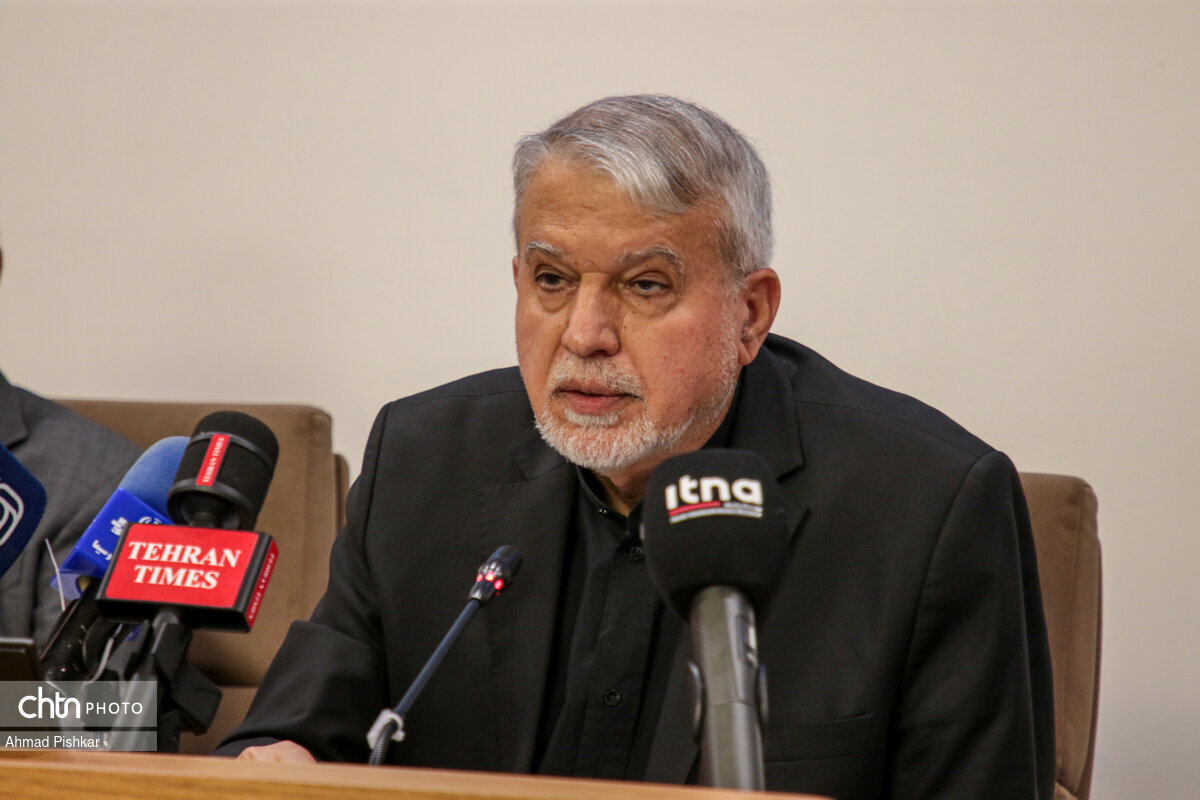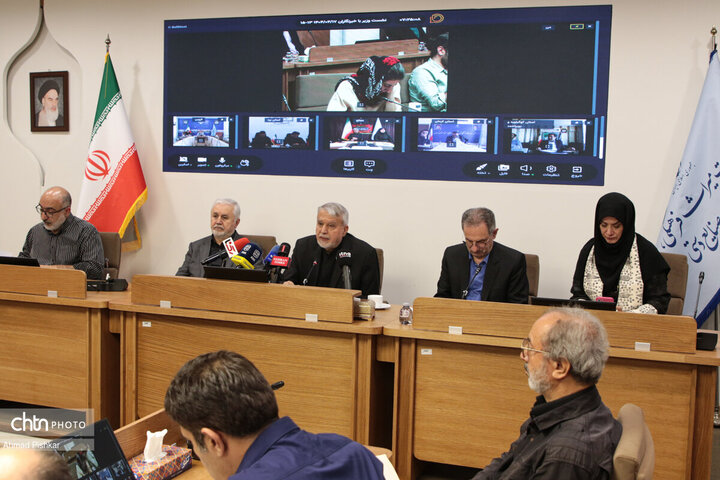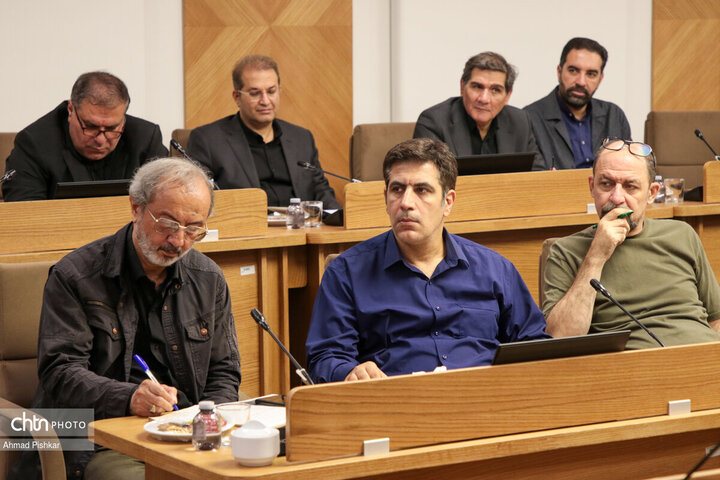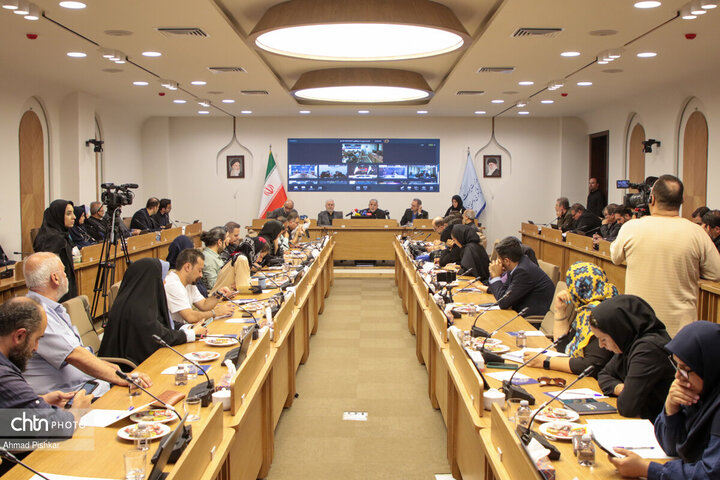Cultural heritage is a voice against hostile narratives, Iran tourism minister says

TEHRAN – In a press conference held on Tuesday afternoon, Iran’s Minister of Cultural Heritage, Tourism and Handicrafts, Seyyed Reza Salehi-Amiri, along with his deputies, addressed the ministry’s role in shaping cultural resilience during the recent 12-day conflict with Israel.
The minister described the country’s current status quo as “neither an all-out war nor lasting peace,” calling for “cultural rationality, social cohesion, and a civilizational narrative” to help Iran navigate ongoing crises.
He further described the recent conflict as a “test of national maturity,” during which the Iranian people opted for steadfast resistance, drawing on their deep cultural, national, and religious identity.
He then condemned Israel’s shift from targeted assassinations to direct attacks on Iran’s infrastructure, including energy, defense, and communications. Despite this, he said, Iranian society foiled their enemy’s plots by displaying restraint, favoring strategic rationality over emotional reactions, and distinguishing between internal critique and external confrontation.

During the event, which included provincial tourism chiefs via virtual participation, the minister also outlined three key responses by the Islamic Republic to the recent military escalation: understanding the overt and covert messages of war, the government’s rapid efforts to maintain social calm, and the ministry’s proactive role in preserving cultural identity.
Elsewhere in his remarks, Salehi-Amiri emphasized the importance of cultural diplomacy, stating that over 100 Iranian academics, artists, and intellectuals had submitted formal objections to global organizations following Israel’s attacks. The ministry also sent official communications to UNESCO and the United Nations, demanding urgent responses.
He then described Iran as the foundation of national unity in an era of narrative fragmentation and urged stronger connections between youth and the nation’s cultural legacy. He echoed three guiding concepts: Iran, Iranian civilization, and cultural Iran (Greater Iran).
“Iran is not merely land -- it is a living spirit embodied in Hafez, Sa’di, Ferdowsi, in our architecture, art, mythology, and museums, to name a few,” he declared.
Referring to the importance of the tourism industry for the government, the minister noted that President Masoud Pezeshkian was personally overseeing the removal of barriers to tourism, and that demands from industry stakeholders are being actively pursued across three main areas.
Moreover, Salehi-Amiri highlighted the government’s mobilization to protect everyday life, noting that more than 800,000 tons of essential goods were distributed from southern ports. He added that during this period, over nine million people traveled to Mazandaran province, and the country’s tourism sector received only 30 service-related complaints.
He noted that the Iranian cabinet has approved a resolution requiring all government entities to prepare damage assessments and submit legal drafts for potential international lawsuits against the Zionist regime of Israel. The Ministry of Cultural Heritage has already compiled its own detailed report, the minister added.

Furthermore, he praised the private tourism sector’s exceptional conduct, revealing that accommodations from Mashhad (the capital of Khorasan Razavi province in northeast Iran) to Gilan [province in the north of the country] opened their doors to citizens, offering discounts of up to 90% -- in some cases, free stays. “This was not a commercial gesture, but a social and ethical one,” the minister said.
Discussing the current tourism scene, the minister underlined that 2,700 tourism projects are currently underway nationwide, adding that a 14-point strategy to revive the tourism sector has been drafted and is being transformed into an actionable plan. He also announced the addition of a special war insurance category in government legislation to support damaged tourism sites.
He also clarified that the ministry’s ongoing long-term rentals of historical properties to eligible private investors are driven by the goal of preservation, not revenue generation. So far, 41 historical buildings have been transferred under 90% leasing schemes.
Salehi-Amiri added that cultural diplomacy has extended to neighboring countries, with new ties forming with Azerbaijan, Armenia, Tajikistan, and Egypt. “Had the recent military escalation not occurred, [the current year] 1404 (which started on March 20) would certainly have been a golden year for Iranian tourism,” he noted.
Deputy ministers share sectoral insights
Deputy Minister of Cultural Heritage Ali Darabi spoke of the ministry’s efforts to protect heritage sites during the 12-day conflict and warned that the withdrawal of the U.S. and Israel from UNESCO has disrupted international cooperation. However, Iranian heritage experts and ICOM have remained engaged through formal correspondence.
Darabi added that Iran helped launch the Ancient Civilizations Forum… .One of its key outcomes was an agreement on the repatriation of historical artifacts among member countries. Tehran’s Intangible Cultural Heritage Center, with 11 permanent members and coverage of 24 countries, plays an active role in cultural diplomacy.
Tourism Deputy Anoushirvan Mohseni-Bandpey, for his part, highlighted the impact of the recent Iran-Israel war on the tourism sector. “A full return to pre-crisis levels will take time,” he said, adding that the ministry has adopted a 14-pronged approach to recovery.

The deputy minister emphasized that many provinces remained unaffected by the conflict and saw increased domestic travel. Religious tourism, he noted, has provided stability during difficult times.
Regarding tourism pricing, he denied rumors and confirmed that all services are priced based on Iranian rials for both domestic and foreign visitors.
Mohseni-Bandpey also outlined Arbaeen pilgrimage plans, including the creation of religious markets and eco-lodges along the walking route to Karbala.
“Religious tourism remains the most active and strategic segment of international tourism in Iran,” he stressed, adding that Arbaeen represents a major opportunity for bilateral and multilateral engagement.
He added that over 3.5 million pilgrims --mainly from Iraq--have visited Iran this year for religious purposes.
Maryam Jalali-Dehkordi, Deputy for Handicrafts, explained the ministry’s cultural strategy during Arbaeen. She said that prior to the outbreak of hostilities, preparations were underway in Ilam and at the Mehran border for special craft markets and displays.
Permanent bases for showcasing Iranian handicrafts are also being planned in Erbil, Sulaymaniyah, and Basra, she said.
The Israeli-imposed war began on 13 June 2025, when the Zionist regime launched surprise attacks on key military and nuclear facilities in the Islamic Republic. In the opening hours of the war, Israeli forces assassinated some of Iran’s prominent military commanders and nuclear scientists.
AM
Leave a Comment